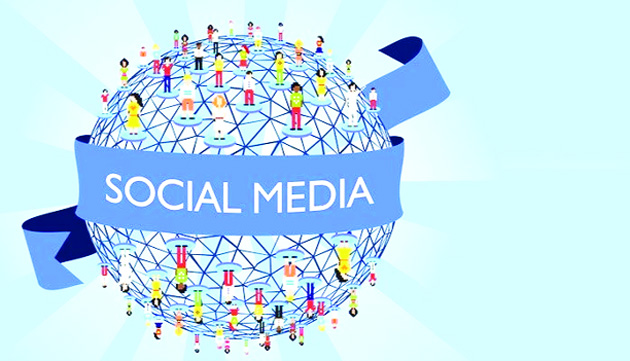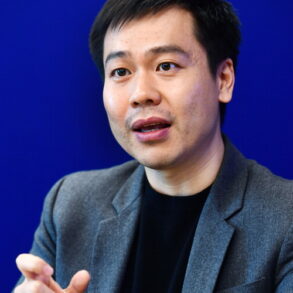Dr Suman Kumar Kasturi
Contemporary society has seen the sway of social media, the mouthpiece of everybody who advocates free speech. Free speech, from one end, has led to harmful content and disinformation over social media, resulting in cybernetic conflicts – profoundly impacting people’s lives beyond virtual interactions. On the other hand, the same social media has paved the way for the brawns of peace. Thus, social media has become pervasive in the digital realm.
Social media has set forth various applications to every section of society – equally accessible to both conflict squads and peacemakers i.e. the community as a whole to engage in both peace and combat exertions. Social media have fashioned prospects in the early phases of peace development to succour with data collection and analysis, reinforcing peace messaging and promulgating dialogue. On the flip side, social media equally risks the stakeholders for the reason that violent conflicts have become progressively more prolonged, and harder to resolve or cease. Social media, the constituents of Information and Communications Technology (ICT), have added to this multifariousness in innovative ways and made a provision for new orders due to inconsistencies in internet access or hate speech and exaggerated propaganda.
Free Speech over Social Media and Russo-Ukraine War
Even though every country in principle accepts the value of free speech, when it comes to practice, there are many exceptions as governments have to safeguard the overall interest of the nation. In this locale, how governments tolerate hostile views or perilous voices is often an upright sign of how they treat human rights on the whole.
The Russo-Ukraine war scenario is a good example to answer whether or not the restrictions imposed by governments bring about a meaningful solution by suppressing free speech over social media. If the overall picture of the Russo-Ukraine conflict is taken into account, social media have played a decisive role since the commencement of the Russian invasion of Ukraine. All the social networking sites have been flooded with testaments of war victims and refugees. Long over time, ever since the war began, the dying embers of the Russo-Ukrainian war still cast a shadow. Further, videos of battles and bombings, memes and messages about the conflict flooded the social media webspace.
The Russo-Ukraine conflict has led to organised propaganda campaigns that were diffused rapidly around the globe, mainly through social media sock puppets – the entire situation has laid the foundation for another concurrent study of how social media sock puppets play a role in information warfare. Nonetheless, in the Russo-Ukraine conflict, information warfare has not been limited to conventional propaganda. It correspondingly arrayed on deplatformization, meaning the denial of access to delivery channels including social media networks.
Social Media as a Powerful Tool for Peace
There is no denying the fact that social media is still in its embryonic phase when considered as a tool for peace. However, it is an equally significant fact that already social media has been established as a powerful tool in various other fields; and extending social media applications to peacemaking, through all stakeholders including the social media users and mediators would persuasively establish a fruitful dialogue and mediation processes.
As mentioned beforehand, the media landscape is radically changing with more and more people receiving information through web channels and has been challenging the role of mainstream media – after all, cyberspace has its own rules and norms. The powerful smartphones present in every household and their social media applications have turned everyone into a consumer of online content. Ubiquity and interactivity are the two significant characteristics of social media that make this new media populated by virtual influencers who play the role of peer leaders.
To establish the sinews of peace through social media, understanding the virtual environment of a conflict and its impact needs a critical analysis of various social media infrastructures. Also, a clear examination of the social media consumers on such platforms as WhatsApp, Facebook, and X (erstwhile Twitter), is of substantial importance, for these platforms have become important tools of public diplomacy that left peacemakers stressed to catch up on how to use social media applications. Indubitably, social media have become an important mobilising force in driving debates, social movements and political change. However, from the other end, social media are also used to incite violence, divide societies, and as a campaigner for recruitment to armed groups.
Conflict-affected groups and peacekeepers can have access to social media to present their distinct narratives of conflict and peace efforts to influence people across the world. Conversely, the complete deplatformization of social media channels alone would hamper such liberty. Having no barriers to information sharing is an advantage as well as a disadvantage to social media. Taking advantage of this factor, social media provides space to hear more diverse voices than conventional media outlets to play an important role in levelling the playing field. This way, social media allows people across the world, both affected and non-affected, to share their narratives and perspectives – and provides a means for fostering dialogue. Also, it enhances data collection and conflict analysis.
As a peacemaker tool, social media can help build trust and confidence by creating direct and inclusive channels of communication and dialogue among the participants, especially in the initial stages of a conflict. Social media enable the Peace Corps to directly address a wide range of audiences to gather a broad understanding of diverse conflict plots and potential entry points for peacemaking. Besides, social media platforms facilitate peacemakers to counter both misinformation as well as disinformation.
In sum, social media has the advantage of reaching even the far-flung areas to advocate peace. Many peacemakers have been using social media channels effectively to embrace peaceful protests and defend democracy for quite some time. This online frontline has an enormous potential to institute the sinews of peace through social media.
(The author is an Air Veteran turned Independent Researcher)
This post was originally published on this site be sure to check out more of their content








